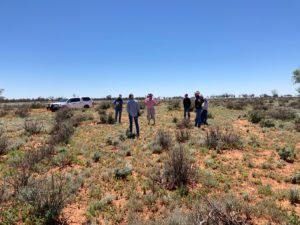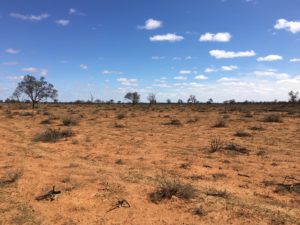Rebuilding our Grazing Business

Wyndham Nov 2020
We are down the track in our rebuild so it is time to reflect on how this has happened and what has been the decision points. While restocking/rebuilding it is also the right time to reflect on our drought/destocking decisions so that we can acknowledge poor decisions and improve our planning for future droughts.
In hindsight the drought hit rock bottom and turned around for us in late February, we started to get small rains and just started inching out of an extremely severe drought. It wasn’t until after shearing in late April that we started to restock, we had measured excess pasture and made the decision to purchase 1,000 ewes, 80% of which were in lamb. We had 1800 ewes between our 2 places that we had managed through the drought, our rams started to get out and chase ewes in April, so we joined our ewes off shears, 4 months later than normal. Both these decisions involved a significant commitment of pasture and were based on 3 successive months of average or above rainfall (14mm Feb, 29mm Mar, 63mm Apr), we saw this as a significant change of trends.
Then came a period of 3 months of below average rain (3mm May, 7mm Jun, 2mm July), which then mean we started to doubt ourselves and rethink. Doubting yourself is really healthy, that drives you to ask questions, to plan for worst case and importantly to reaffirm your decision. In my opinion “blind confidence” is very dangerous and needs to be shaken out of businesses, it leads to poorly thought out decisions that can come tumbling down. Through this period we scanned ewes and identified a destocking program should the rain just stop.
Then came the wet 3 months of August to October (44mm Aug, 28mm Sept, 57mm Oct), during this period we purchased another 2,000 sheep, while selling nearly 1,000(Lambs and scanned ewes). So while we had to organise access to more finance, we have been able to cashflow some of the purchases. We were happy with our decision to sell our store X-bred lambs at just 34kg straight off Mum for $150, as we are heading into a period of traditional heat and low weight gains, it is 40 deg as I write this. We also had to purchase 50 odd rams in this period, as we currently had 4,500 ewes to join and hadn’t bought any rams for 2 years, a mix of White Suffolk and Poll/merino rams.
The ”plan” going forward is to have a wide breeding window as we have lambs currently that we are still to mark and would normally join in early January. We are joining some ewes now that we are looking at scanning and selling in early Feb, then if there is still plenty of pasture around we will look to purchase dry ewes and do the same again. Most of our merino ewes joined to merinos will be joined in Mid December, with our existing ewes re joined in February, then we can bring them back to a January joining in 2022. We might retain this wide and spread out lambing going forward to cover off on our risk of poor winter/seasonal conditions, though that will be up for discussion.
The confidence in our decisions comes from interrogating our components of our business, this is how we do that:
- KLR Marketing – use the spreadsheets and/or the app to make sure that the stock we are purchasing will be profitable and value our grass.
- Maia Grazing – We use this in association with Dick Richardson (Grazing Naturally) this enables us to do feed budgets and plan scenarios
- Grazing Management – By rotating our stock around, like we have done for many years we have a diverse range of plants, so we know the country is healthy for the stock we bring in.
- Key business partners – We maintain good communications with our stock agent, bank and shearing contractors so that they understand our needs and vice versa
- Immediate Family – This is super important and the main motivator behind what we do, wife and son are key in decisions, they understand and ask questions so we have looked at all facets of an issue
Currently we are only about 1/3 stocked, so there is plenty of spare pasture, this might enable us to give extended rest (Sabbath) some paddocks and build up the “browse” for our haystack. At the same time we have enough stock so we can focus our grazing on some areas that will benefit from livestock to kick start the biology under the soil (Priority), this has already resulted in improved ground cover due to plants stooling out rather than just growing up and maturing.

Wyndham “Grass” Early April 2020
Review of Drought Management
This was our 3rd significant drought since we have been at Wyndham and we are getting better at managing them, even though we are slow learners. Below is what we reckon we took away:
What can we improve:
- Read the signs of low weight gains and get rid of young stock early, especially cattle
- Scan stock and class stock to identify diversity, makes sales easier
What we did well:
- Chose not to feed, no safety net
- Started selling early November 2016
- Still did some trades, had 2 significant buys giving handy cashflow
- Maintained good relationship with key business partners and also employed Dick to support us.
- Looked after us, our land and our remaining livestock
If you haven’t done a review of your drought management, then I recommend you do, so that you can learn important lessons and make sure you are better prepared for the next one.
